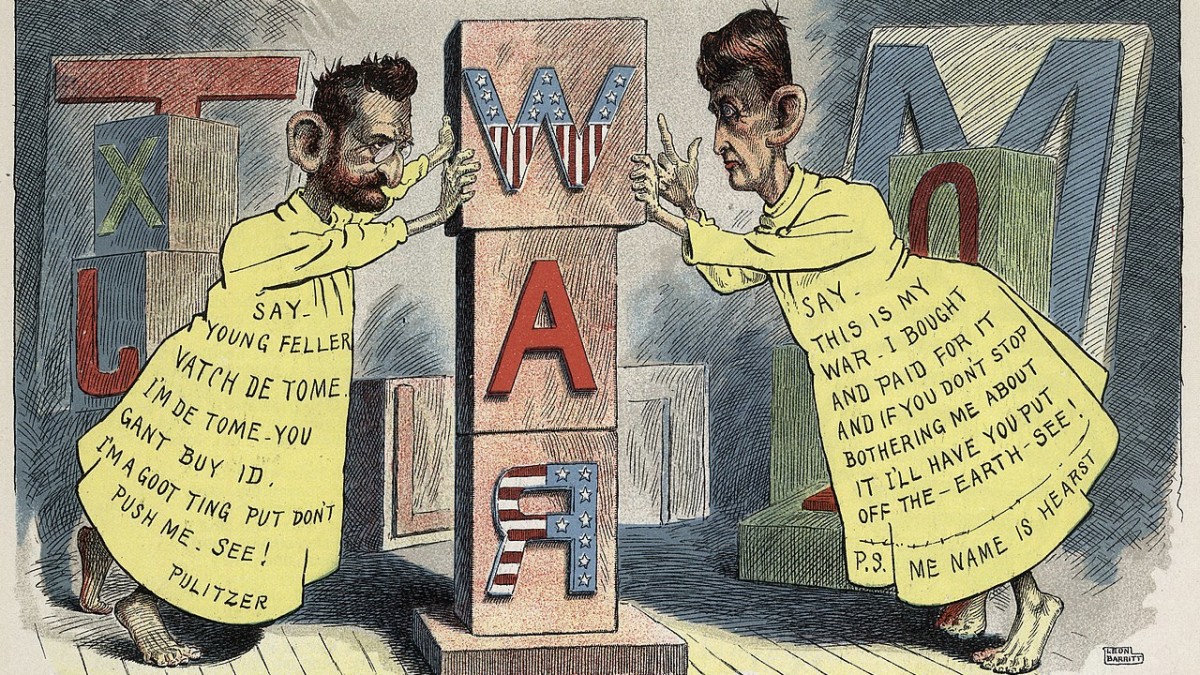The term “yellow journalism” is used to describe a type of reporting that is sensationalized and often uses unethical practices in order to sell more newspapers. This type of journalism got its start in the late 1800s, when two New York City newspapers, Joseph Pulitzer’s New York World and William Randolph Hearst’s New York Journal, engaged in a fierce competition for readers. In order to increase circulation, both newspapers began publishing increasingly sensationalized stories, often with little regard for the truth. This type of reporting soon became known as “yellow journalism.”
One of the most famous examples of yellow journalism occurred during the Spanish-American War. At the time, Spain was a colonial power with holdings in the Caribbean and Latin America. In 1898, tensions between Spain and the United States were high due to American support for rebels in Cuba who were fighting for independence.
On February 15, 1898, the U.S. battleship Maine exploded in Havana Harbor. The explosion killed over 260 American sailors and caused significant damage to the ship. While the exact cause of the explosion was never determined, many Americans blamed Spain and called for war.
In the days after the explosion, both the New York World and the New York Journal published a number of stories that were highly critical of Spain. Many of these stories were based on little or no evidence, but they served to further inflame public opinion against Spain. As a result of this coverage, public support for war with Spain grew, and in April 1898, Congress voted to declare war.
While it is impossible to say definitively whether or not yellow journalism played a role in causing the Spanish-American War, it is clear that it helped to create a climate of public opinion that was favorable to war. In an era before television or radio, newspapers were one of the main ways that people got their news. As a result, the type of coverage that these papers provided could have a significant impact on public opinion.
During the Spanish-American War, both the New York World and the New York Journal engaged in widespread yellow journalism. This type of reporting often included stories that were highly critical of Spain with little regard for the truth. As a result of this coverage, public opinion in favor of war with Spain grew, and in April 1898, Congress voted to declare war. While it is impossible to say definitively whether or not yellow journalism played a role in causing the Spanish-American War, it is clear that it helped to create a climate of public opinion that was favorable to war.
How does yellow journalism still impact our society today?
While the term “yellow journalism” is most often used to describe a type of reporting that occurred in the late 1800s, it is still relevant today. In an age of 24-hour news cycles and social media, the pressure to produce sensationalized stories can be strong. As a result, it is important to be critical of the news that we consume and to look for sources that are objective and trustworthy.
One recent example of yellow journalism occurred during the 2016 U.S. presidential election. During the campaign, many news outlets published stories that were highly critical of both candidates. In some cases, these stories were based on little or no evidence, but they served to further inflame public opinion. As a result of this coverage, the election was one of the most divisive and polarizing in recent memory.
While the term “yellow journalism” is most often used to describe a type of reporting that occurred in the late 1800s, it is still relevant today. In an age of 24-hour news cycles and social media, the pressure to produce sensationalized stories can be strong. As a result, it is important to be critical of the news that we consume and to look for sources that are objective and trustworthy.
